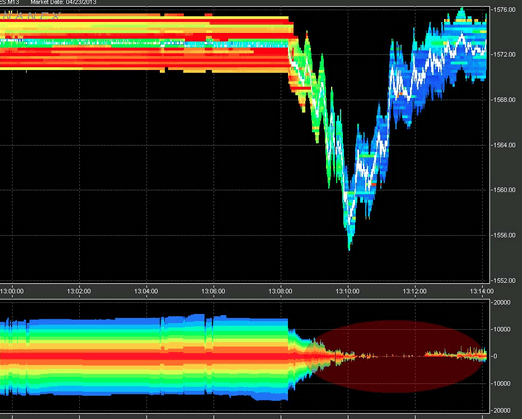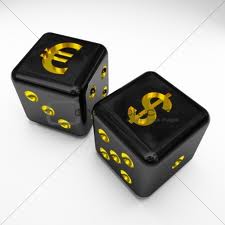
Forex Trading MBA Part 4: Market Depth and Liquidity
Trading in the FX, Forex market is a powerful way to create additional income, trade professionally and the basics of it are very simple. However is all about learning of ea trading and having a sound education and managing to get into the best approached. Therefore if you have any experience at trading in other markets, such as the stock market, then you should be able to pick it up pretty easily. This 4th part of our tradersdna Forex Trading MBA will highlight the aim of understanding Market Depth and Liquidity.
Market depth and Liquidity
Unlike other markets, such as the Nasdaq or the London Stock Exchange, the forex market does not have a physical location, or a central exchange. Rather, it is considered an Over-the-Counter (OTC) or inter-bank market, due to the fact that the whole thing is run via an electronic network of banks.
The OTC forex market is the biggest and most widely-used financial market in the world, operating 24 hours a day from Sunday evening to Friday night. It is used by a huge number of clients, ranging from huge multinational banks to individual investors. It has been estimated that over $4 trillion worth of currencies are traded on the forex market every day. By way of comparison, the average daily trading volume on the futures market is a paltry $30 billion.
Participants in the OTC market choose who they want to trade with based on the attractiveness of the prices on offer, reputation, and trading conditions.
 The US dollar is by far the most traded currency on the forex market, and is involved with nearly 85% of all transactions. The next most traded currency is the euro with 39%, followed by the yen with 19%.
The US dollar is by far the most traded currency on the forex market, and is involved with nearly 85% of all transactions. The next most traded currency is the euro with 39%, followed by the yen with 19%.
There are several reasons why the US dollar is traded more than any other currency. For starters, nearly 62% of the world’s official foreign exchange reserves are denominated in dollars, according to the International Monetary Fund (IMF). Also, the US has the largest economy, the biggest and most liquid financial markets in the world, and has a very stable political system. It is also the currency of choice for the majority of cross-border transactions, so if Brazil wanted to buy oil from the United Arab Emirates, it would have to do so using US dollars. If Brazil did not have any dollars, it would have to trade in its reals for dollars before it could buy the oil.
While financial and commercial transactions such as the oil deal mentioned above are part of the global trading volume on the forex market, the vast majority of trades are based on speculation. In fact, more than 90% of the trading volume on the forex market comes from traders that buy and sell based on intraday price fluctuations.
 The sheer amount of speculative trading on the forex market means that liquidity, which is the amount of buying and selling volume at any given time, is very high in comparison to other financial markets. This means that is very easy to buy and sell currencies, as there will always be plenty of people willing to sell to you or buy from you.
The sheer amount of speculative trading on the forex market means that liquidity, which is the amount of buying and selling volume at any given time, is very high in comparison to other financial markets. This means that is very easy to buy and sell currencies, as there will always be plenty of people willing to sell to you or buy from you.
From an investor’s point of view, liquidity is extremely important as it determines how easy it is for the price to change over a certain period of time. The high liquidity of the forex market means that huge trading volumes can take place without having a very big effect on prices.
Although the forex market as a whole is very liquid, the depth of the market can depend on the currency pair. For example, at any given time, a major currency pair such as EUR/USD is likely to have a much greater market depth than a cross-currency pair such as GBP/CHF. Also, the time of day can have a large bearing on the market depth. For instance, the best time to trade currency pairs involving the Japanese yen is when the Asian financial markets are open, as there will be much more trading activity involving the yen around this time.
Although the forex market never grinds to a halt during the week, it can be broken up into four daily trading sessions that reflect normal trading hours in different time zones – the Sydney session, the Tokyo session, the London session, and the New York session. The timetables are different during the winter and the summer, due to daylight saving time (DST) adjustments.
Summer
Time Zone EDT GMT
Sydney Open 6:00 PM 10:00 PM
Sydney Close 3:00 AM 7:00 AM
Tokyo Open 7:00 PM 11:00 PM
Tokyo Close 4:00 AM 8:00 AM
London Open 3:00 AM 7:00 AM
London Close 12:00 PM 4:00 PM
New York Open 8:00 AM 12:00 PM
New York Close 5:00 PM 9:00 PM
Winter
Time Zone EDT GMT
Sydney Open 4:00 PM 9:00 PM
Sydney Close 1:00 AM 6:00 AM
Tokyo Open 6:00 PM 11:00 PM
Tokyo Close 3:00 AM 8:00 AM
London Open 3:00 AM 8:00 AM
London Close 12:00 PM 5:00 PM
New York Open 8:00 AM 1:00 PM
New York Close 5:00 PM 10:00 PM
As you can see, there are periods where two sessions are open at the same time. For example, between 7am and 8am in summer, the Tokyo session and the London session overlap. These times when sessions overlap are the busiest times of the trading day, due to the fact that more than one market is open at once. This means that there is more money changing hands at these times, which means more price movement and greater market depth – both of which are highly desirable for a forex trader.
All The Forex Trading MBA series here:
Forex Trading MBA Part 1: Introduction
Forex Trading MBA Part 2: Exchange Rates and Currency Pairs
Forex Trading MBA Part 3: Currency Quotes
Forex Trading MBA Part 4: Market Depth and Liquidity
Forex Trading MBA Part 5: Key Terms Explained
Forex Trading MBA Part 6: Placing Trade Orders
Tradersdna is a leading digital and social media platform for traders and investors. Tradersdna offers premiere resources for trading and investing education, digital resources for personal finance, market analysis and free trading guides. More about TradersDNA Features: What Does It Take to Become an Aggressive Trader? | Everything You Need to Know About White Label Trading Software | Advantages of Automated Forex Trading








